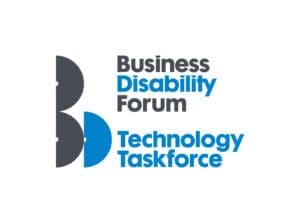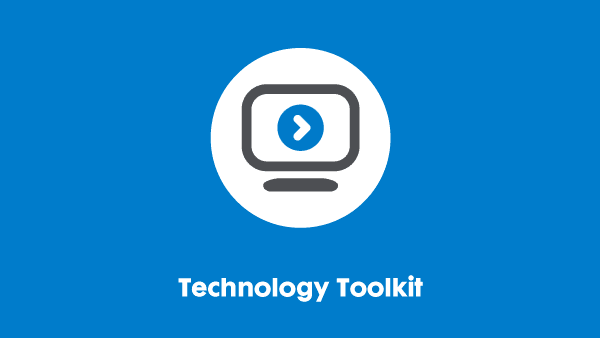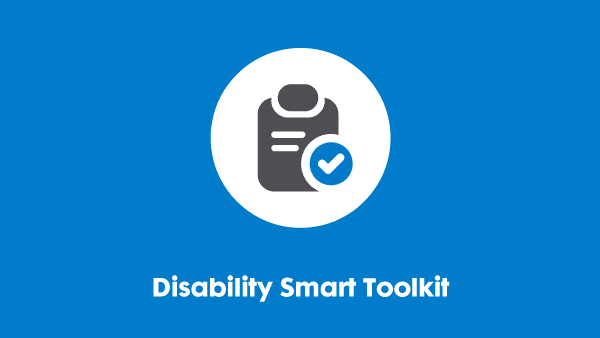Last updated: 4 August 2025
Accessibility training for IT professionals
This resource was created by our Technology Taskforce, a group of senior IT accessibility individuals from leading UK and global organisations. For more information, including how to join, see our website.

Introduction
Why does everyone need to know about accessibility? Traditionally, if accessibility was considered at all, it has been seen as the responsibility of a particular individual or team who developed the specialist knowledge required. In fact, it is best practice to make sure that everyone is aware of accessibility requirements, whatever their job role.
The alternative is that when one person picks up on the need, they kick it back ‘up the chain’ for accessibility to be built in at the point(s) it was missed. Double-handling is never a good policy, and universal accessibility awareness will help to avoid that.
It is true that not everyone needs to develop an in-depth understanding of all aspects of accessibility provision. What they should have is an understanding of how their own role can impact the accessibility of the organisation’s products, and where to go for help in making that a positive impact.
Mandatory IT accessibility training courses
We recommend making it mandatory for all roles to receive some level of accessibility training.
It is sensible to be flexible about the type, format and venue of this training, as well as the level of expertise. We have created a list of some of the available accessibility training available. It is broken down by level of expertise and by format. Find out more about our ‘Accessibility training: A guide to available resources.’
Obtaining management buy-in
To make accessibility training mandatory, you need a business case that persuades senior management of the benefits.
We have created a resource about ‘How accessibility benefits your business.’ This contains everything you need to make the business case for accessibility within your organisation.
This resource outlines the benefits of accessibility in general. Alongside this, you will need to make the case for accessibility training to achieve accessibility. The strongest case for mandatory accessibility training is made by the need for a unified approach. Wider awareness of accessibility throughout the process will save significant amounts. It is a truism of IT development that if an issue found in design costs £1 to fix, it will cost £10 if found in testing and £100 in live. Money isn’t the only resource wasted by going back to fix problems: time is rarely something projects have too much of!
We have created a guide to ‘Obtaining management buy-in for digital accessibility,’ which has more information.
Obtaining staff buy-in
As well as convincing management why everyone should have accessibility training, it’s also important to make the case to the staff who will be doing the training. Many people will see the benefit of this, but it is also likely that some people will not see it as important enough to take time out of their busy schedules for this.
They may do the training just because it is compulsory, but then a proportion will skim though it with minimal concentration, seeing it as a tick-box exercise, ‘something that must be done because the boss says so’. To overcome this, they need to see its relevance to them.
A good approach, as with management, is to emphasise the benefit of knowing accessibility from the outset of their work. If they don’t take accessibility into account at their particular stage of the work, they may find it coming back to them for correction when the omission is noticed.
Another is to ensure that the training begins with something that they can identify with. There is a disconnect in some people’s minds between ‘the disabled’ – them – and everyone else – us. If the user profile starts with ‘Bob was blind from birth’ that division may lessen their empathy. ‘Sarah lost her sight snowboarding’ may do a better job of grabbing the attention of people who struggle to empathise with such different life experiences. ‘Rachel’s RSI made keyboard work a torture’ might appeal more to middle-aged Business Requirements drafters. That this is not just for ‘them’, but ‘I’ might need it sometime, is a strong incentive to pay attention to accessibility.
What should the training include?
We explain what accessibility training should include and how it should be structured and delivered in our resource, ‘Ensuring accessible e-learning.’
The basic requirements that should be covered in training are:
- What accessibility means, and how many people need some form of adjustments,
- Personal anecdotes about the effect of their condition from users. This brings the subject to life, and we recommend it highly;
- Demonstrations of how various assistive software packages work, and how much of their functionality can be delivered through browser settings,
- The economic, legal and moral reasons for meeting accessibility requirements,
- The standards required by your organisation,
- Delivering accessibility through design and code,
- Empathy training (see below),
- Accessibility testing,
- Sources of advice and guidance (such as your organisation’s accessibility experts).
Empathy training for developers
Why do IT professionals need empathy training?
It is a cliché to say that IT professionals have poorly developed social skills. However, it can be easy to lose sight of your customers and what they need as an IT professional. Empathy training can be a useful reminder of the value of really understanding their customers’ wants and needs.
There are aspects of empathy training which contribute significantly to developers’ job roles. A formal definition of empathy is the ability to identify and understand another’s situation, feelings and motives. While some of that may be dismissed as ‘touchy-feely’ stuff, a lot more is a hard-headed business requirement.
Empathetic skills help the developer to take business requirements beyond customers’ stated ‘wants’ to understand their real ‘needs’. Developers can deliver one of two things: either what the customer asks for, or what they need.
Understanding true needs
Customers will often ask for what they already have, but with added capabilities and/or process changes. These changes pile up over multiple ‘improvements’ to produce an ungainly structure which is slow and complex to use. And they don’t think to mention some constraints that they perceive as obvious, because “everybody knows that…”
On the other side of the conversation, developers who do not understand the task for which the system is being designed may accept the customers’ description (as they understand it) to be the best solution.
The old word for this was ‘solutionising’: the customer approaches the developers and instead of specifying the job that they need a system to do, they describe the solution they want. Sometimes, that is because customers don’t understand the capabilities and limitations of modern IT systems. If the developer actually produces a solution designed by the customer, the result may be “It’s just what I asked for, but not what I needed.”
Involving disabled users or customers in the process can make a huge impact. Customer research should involve talking to them about their challenges in everyday life and what difficulties they have in using IT. That can be very effective in helping developers understand their needs.
The benefits of empathy training
Empathy training for developers will teach them not to accept customers’ solutions, but (in a suitably diplomatic way) to break them down and find out the basic requirements behind them. Those come from the customer’s ‘situation and motives.’ Once the requirements are reduced to functional needs, the developer can then design and build solutions from the ground up to be as efficient as possible.
From the organisation’s point of view this empathetic approach will produce better designs for their IT solutions. They will run more quickly and efficiently and be structured with the capacity for future improvements in mind. The return on training for their developers will be immense.
Further information
We have produced a range of other guidance on this area. Some of the available resource are:
- Accessibility training: A guide to available resources
- How accessibility benefits your business
- Obtaining management buy-in for digital accessibility
- Ensuring accessible e-learning
- Staff consultation methods.
Business Disability Forum Members and Partners can also contact our Advice Service for guidance on specific questions.
If you require this content in a different format, contact enquiries@businessdisabilityforum.org.uk.
© This resource and the information contained therein are subject to copyright and remain the property of the Business Disability Forum. They are for reference only and must not be copied or distributed without prior permission.


